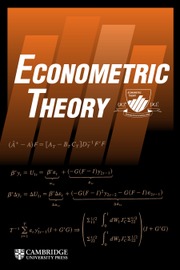No CrossRef data available.
Article contents
WELFARE ANALYSIS VIA MARGINAL TREATMENT EFFECTS
Published online by Cambridge University Press: 16 September 2024
Abstract
We consider a causal structure with endogeneity, i.e., unobserved confoundedness, where an instrumental variable is available. In this setting, we show that the mean social welfare function can be identified and represented via the marginal treatment effect as the operator kernel. This representation result can be applied to a variety of statistical decision rules for treatment choice, including plug-in rules, Bayes rules, and empirical welfare maximization rules. Focusing on the application of the empirical welfare maximization framework, we provide convergence rates of the worst-case average welfare loss (regret).
Information
- Type
- ARTICLES
- Information
- Copyright
- © The Author(s), 2024. Published by Cambridge University Press
Footnotes
We thank Toru Kitagawa, Simon Lee, two anonymous referees, and the seminar participants at LMU Munich for their very useful comments. The usual disclaimers apply. Sasaki thanks Brian and Charlotte Grove Chair for research support.

